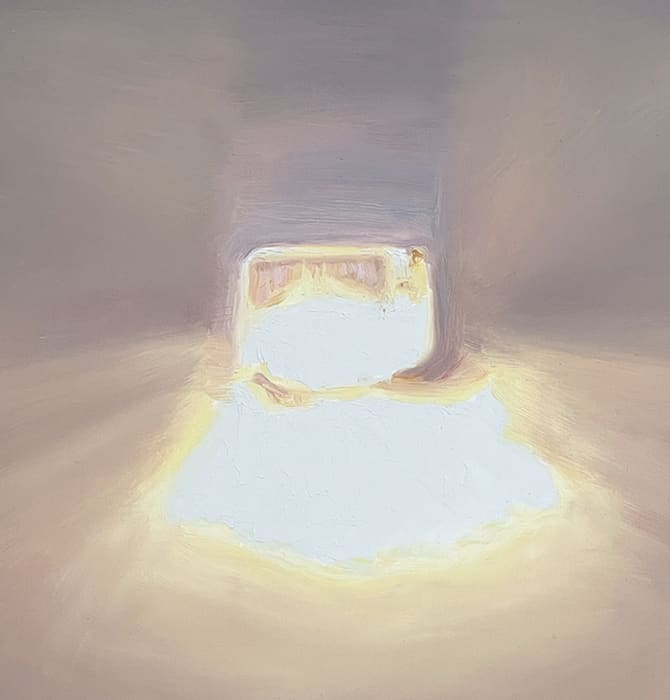
Carrie Secrist Gallery is pleased to announce Brendan Getz: when the after-image is the image, a solo presentation of paintings and object installation by the Bay Area artist. This is the artist’s first solo exhibition in Chicago, and opens January 15 to continue through February 26, 2022. It will be viewable in person, with or without appointment, at our gallery located at 900 W. Washington BLVD, Chicago, IL.
This exhibition will open to the public Saturday, January 15 with a reception that day from 12 to 5PM (masks are mandatory). An online viewing room with expanded features and information on the exhibition will also be accessible the same day through our website. If you would like to make an appointment in person, please visit the Reservation page on our website.
Through a thoughtfully considered painting practice, Brendan Getz unpacks the rich complexity, depth and nuance of strikingly simple forms and images with an attitude and atmosphere that opens them far beyond their initial approach. For this exhibition, the artist has chosen the title: when the after-image is the image, a nod to the responsive effect produced in the mind’s eye after seeing a vivid image, but also in reference to how a memory of the past can shape the present. Including over 70 paintings and 7 studio objects, this expansive exhibition is installed specifically on site, in the gallery’s discrete rooms and spaces that point intimately to one another. Produced over the past decade, this work includes movements into the pandemic, and its effects of review, reconsideration and change in a multitude of public and private dimensions.
Recalling the artist’s own live-work space, the paintings often depict moments of the domestic and routine in a working studio that doubles as a living room. As the gallery itself is also a former and future domestic space, this doubling of a live-work relationship becomes active throughout the entirety of the exhibition, in exciting and often surprising ways, where the public and the private meet in a discursive encounter. Among the objects installed are the artist’s own studio chairs, a floor mat and a mahl stick, as paint laden peripheral objects presented for review.
As the philosopher Paul Ricoeur puts it, “…how can we help but leap to the plane of collective memory and evoke the sort of hauntedness, described by historians of the present day, which stigmatizes this ‘past that does not pass’?” For Getz, this involves the doubling of familiar perceptual habit as it meets with collective memory– an uncanny source of renewal that renders the conventional strange, and leads to an expanded and hopeful sense of possibility for the future.



